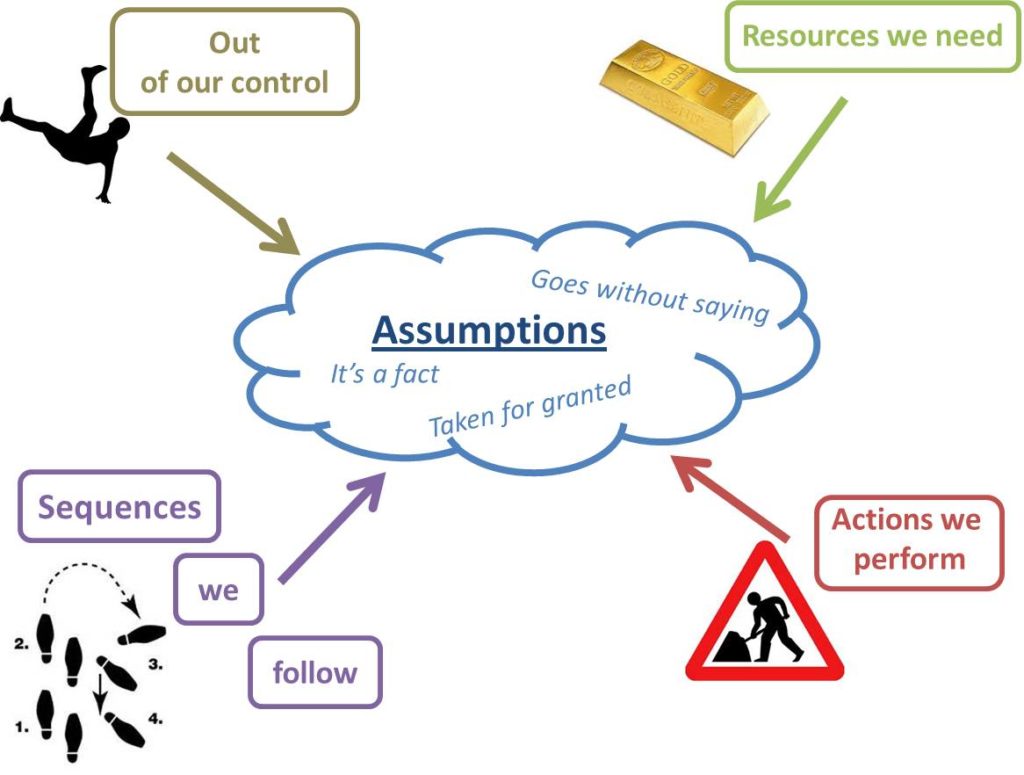Fishbone
The fishbone technique uses a visual organizer to identify the possible causes of a problem. This technique discourages partial or premature solutions and demonstrates the relative importance of, and interactions between, different parts of a problem.
On a broad sheet of paper, draw a long arrow horizontally across the middle of the page pointing to the right. Label the arrowhead with the title of the issue to be explained. This is the “backbone” of the “fish.” Draw “spurs” from this “backbone” at about 45 degrees, one for every likely cause of the problem that the group can think of; and label each. Ideally, the fishbone is redrawn so that position along the backbone reflects the relative importance of the different parts of the problem, with the most important at the head.
Reversal
The reversal method takes a given situation and turns it around, inside out, backwards, or upside down. Any situation can be “reversed” in several ways. Looking at a familiar problem or situation in a fresh way can suggest new solutions or approaches. It doesn’t matter whether the reversal makes sense or not.
In a marketing class, instead of asking “how can management improve the store?” reversal questions can ask: How can the store improve management? How can the store improve itself? How can management make the store worse?


